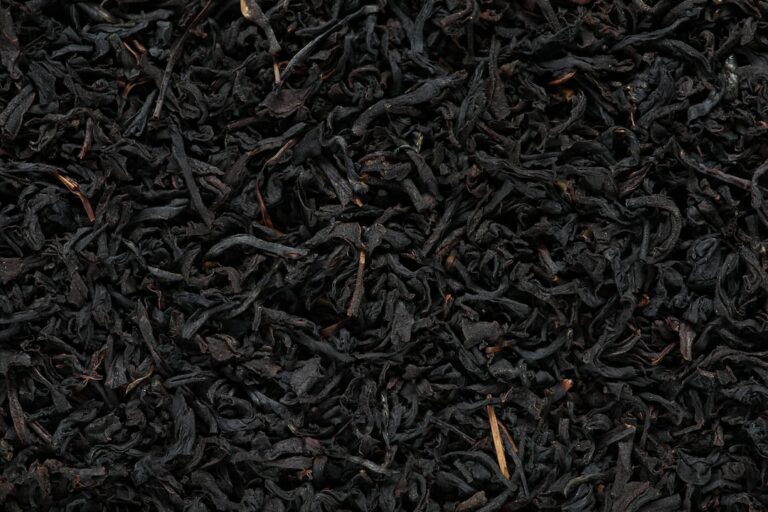Introduction
What is Diazepam?
Diazepam is a medication that belongs to the benzodiazepine class of drugs. It is commonly used to treat anxiety disorders, muscle spasms, and seizures. Diazepam works by enhancing the effects of a neurotransmitter called gamma-aminobutyric acid (GABA) in the brain, which helps to reduce excessive brain activity and promote relaxation. This medication is available in tablet, liquid, and injectable forms. Some of the most important keywords related to diazepam include medication, benzodiazepine class, anxiety disorders, muscle spasms, seizures, neurotransmitter, gamma-aminobutyric acid (GABA), brain activity, relaxation, tablet, liquid, and injectable forms.
Importance of Diazepam
Diazepam is a widely used medication that belongs to the benzodiazepine class of drugs. It is commonly prescribed to treat anxiety, seizures, muscle spasms, and alcohol withdrawal symptoms. The importance of Diazepam lies in its ability to provide relief and promote healing without relying solely on pharmaceuticals. By targeting the central nervous system, Diazepam helps to calm the mind and relax the muscles, allowing individuals to experience a sense of tranquility and well-being. Furthermore, Diazepam can be a valuable tool in managing certain medical conditions, offering patients a chance to regain control over their health and improve their quality of life. With its proven efficacy and therapeutic benefits, Diazepam continues to play a crucial role in modern medicine.
Need for Alternatives
Diazepam, a commonly prescribed medication for anxiety and muscle spasms, has been a widely used drug for many years. However, due to its potential for addiction and dependence, there is a growing need for alternative medications that can provide similar benefits without the same risks. Patients and healthcare providers are seeking alternatives that can effectively treat anxiety and muscle spasms while minimizing the potential for addiction. Finding the closest drug to diazepam is crucial in ensuring that patients have access to safe and effective treatment options.
Common Alternatives to Diazepam

Alprazolam
Alprazolam is a medication that belongs to the benzodiazepine class of drugs. It is commonly prescribed for the treatment of anxiety disorders, panic disorders, and insomnia. Alprazolam works by enhancing the effects of a neurotransmitter called gamma-aminobutyric acid (GABA) in the brain, which helps to reduce anxiety and promote relaxation. This medication is known for its fast-acting nature and is often used to provide immediate relief from symptoms. Alprazolam is considered to be one of the closest drugs to diazepam in terms of its mechanism of action and therapeutic effects. Some of the important keywords that can be formatted bold in this paragraph are Alprazolam, benzodiazepine class of drugs, anxiety disorders, panic disorders, insomnia, neurotransmitter, gamma-aminobutyric acid (GABA), brain, anxiety, relaxation, fast-acting, immediate relief, mechanism of action, and therapeutic effects.
Lorazepam
Lorazepam is a medication that belongs to the benzodiazepine class of drugs. It is commonly used to treat anxiety disorders, insomnia, and seizures. Lorazepam works by enhancing the effects of a neurotransmitter called gamma-aminobutyric acid (GABA) in the brain, which helps to reduce anxiety and promote relaxation. This medication is known for its sedative properties and can be habit-forming if used for a long period of time. It is important to use Lorazepam as prescribed and under the supervision of a healthcare professional. When considering brain health and cognitive enhancement, it is worth noting that Lorazepam is not classified as a brain-boosting supplement. However, there are other supplements available that are specifically designed to support brain function and improve cognitive performance. These supplements often contain ingredients such as vitamins, minerals, and herbal extracts that have been shown to have beneficial effects on brain health. It is important to consult with a healthcare professional before starting any new supplement regimen to ensure safety and effectiveness.
Clonazepam
Clonazepam is a medication that belongs to the benzodiazepine class of drugs. It is commonly prescribed for the treatment of various conditions such as epilepsy, panic disorder, and anxiety. Clonazepam works by enhancing the effects of a neurotransmitter in the brain called gamma-aminobutyric acid (GABA), which helps to calm the nervous system. This medication is known for its effectiveness in reducing seizures and controlling symptoms of anxiety. Many individuals find relief from their symptoms when taking Clonazepam, making it a valuable option for those in need of medication to manage their conditions. It is important to note that Clonazepam should only be taken under the supervision of a healthcare professional, as it can have potential side effects and may interact with other medications. Overall, Clonazepam is a widely used and trusted medication that has proven to be beneficial for many individuals.
Comparison of Diazepam and its Alternatives

Mechanism of Action
Diazepam is a widely used medication known for its anxiolytic and sedative properties. It belongs to the benzodiazepine class of drugs and acts by enhancing the effects of gamma-aminobutyric acid (GABA), a neurotransmitter that inhibits brain activity. This mechanism of action results in the calming and relaxing effects of diazepam. However, individuals who are seeking alternative treatments may be interested in exploring herbal remedies. Herbal remedies, such as valerian root and chamomile, have been traditionally used to promote relaxation and reduce anxiety. These natural alternatives may offer a gentler approach for individuals seeking a drug-free option. It is important to note that the effectiveness and safety of herbal remedies may vary, and it is advisable to consult with a healthcare professional before incorporating them into a treatment plan.
Efficacy
Diazepam is a widely used medication for the treatment of anxiety and seizures. However, some individuals may prefer natural alternatives to conventional drugs. In the natural medicine series, several options have been explored as potential substitutes for diazepam. These alternatives aim to provide similar efficacy in managing anxiety and seizures, but with a focus on natural ingredients and holistic approaches. By incorporating natural medicine into their treatment plans, individuals can explore different options that may complement their overall well-being.
Side Effects
Diazepam, a commonly prescribed medication for anxiety and seizures, is known for its effectiveness in managing these conditions. However, it is important to be aware of the potential side effects associated with this drug. Some common side effects of diazepam include drowsiness, dizziness, and confusion. It is also important to note that diazepam can interact with other medications and substances, such as alcohol, leading to increased sedation and impairment. Additionally, long-term use of diazepam can lead to dependence and withdrawal symptoms. Therefore, it is crucial to use diazepam as prescribed by a healthcare professional and to be aware of any contraindications, especially when it comes to the use of herbs. Certain herbs may have contraindications with diazepam, and it is important to consult with a healthcare professional before combining them. By being informed about the potential side effects and contraindications, individuals can make well-informed decisions regarding the use of diazepam and ensure their safety and well-being.
Safety and Precautions

Drug Interactions
Drug interactions occur when two or more drugs react with each other, causing changes in how the drugs work or increasing the risk of side effects. It is important to be aware of potential drug interactions, especially when taking medications such as diazepam. Diazepam, also known as Valium, is a commonly prescribed medication used to treat anxiety, seizures, and muscle spasms. When combined with other drugs, diazepam can have interactions that may alter its effectiveness or increase the risk of adverse effects. It is crucial to consult with a healthcare professional or pharmacist before starting or stopping any medications to ensure the safety and efficacy of diazepam.
Pregnancy and Breastfeeding
During pregnancy and breastfeeding, it is important to be cautious when it comes to taking medications. This includes heavy metal detox treatments. While there is no specific drug that is considered the closest alternative to diazepam for heavy metal detox, it is important to consult with a healthcare professional before starting any new treatment. They can provide guidance on the safest options available and help determine the best course of action for the individual’s specific needs.
Addiction Potential
Diazepam, a commonly prescribed medication for anxiety and seizures, has a significant addiction potential. It belongs to the benzodiazepine class of drugs, which are known for their sedative and calming effects. While diazepam can be effective in managing certain conditions, it is essential to be aware of its addictive nature. Addiction to diazepam can lead to dependence, tolerance, and withdrawal symptoms when the drug is discontinued. It is crucial for individuals using diazepam to follow their healthcare provider’s instructions carefully and to be mindful of the potential risks associated with its use.
Conclusion
Summary
Diazepam is a commonly prescribed medication that belongs to the benzodiazepine class of drugs. It is primarily used to treat anxiety disorders, muscle spasms, and seizures. However, there are other drugs that are similar to diazepam and can be used as alternatives. One such drug is lorazepam, which is also a benzodiazepine and is used to treat similar conditions. Another alternative is alprazolam, which is commonly prescribed for anxiety disorders. These drugs work by enhancing the effects of a neurotransmitter called gamma-aminobutyric acid (GABA) in the brain, which helps to reduce anxiety and promote relaxation. It is important to note that the choice of medication should be made in consultation with a healthcare professional, as they can provide personalized recommendations based on individual needs and medical history.
Choosing the Right Alternative
When it comes to choosing the right alternative to diazepam, there are several factors to consider. One of the most important considerations is finding a drug that has similar effects and benefits as diazepam. It is also crucial to ensure that the alternative drug is safe and effective for the intended use. Additionally, the cost and availability of the alternative should be taken into account. Consulting with a healthcare professional can provide valuable insights and recommendations for selecting the most suitable alternative to diazepam.
Consulting a Healthcare Professional
When it comes to determining the closest drug to diazepam, it is important to consult a healthcare professional. They have the knowledge and expertise to evaluate your specific medical condition and recommend the most suitable alternative. Consulting a healthcare professional is crucial as they can consider various factors such as your medical history, current medications, and any potential drug interactions. By seeking their guidance, you can ensure that you are making an informed decision and prioritizing your health and well-being.
FAQ (Frequently Asked Questions)

What are the common uses of Diazepam?
Diazepam is a widely used medication that belongs to the benzodiazepine class of drugs. It is commonly prescribed for the treatment of anxiety, insomnia, and seizures. Diazepam works by enhancing the effects of a natural chemical in the body called gamma-aminobutyric acid (GABA), which helps to calm the brain and nerves. In addition to its medical uses, diazepam has also been studied for its potential benefits in herbal medicine. Some research suggests that certain herbal preparations containing diazepam-like compounds may have similar effects on the central nervous system. However, further studies are needed to fully understand the safety and efficacy of these herbal remedies. Overall, diazepam is a versatile medication with a range of common uses and potential applications in herbal medicine.
Are there any natural alternatives to Diazepam?
Diazepam, also known by its brand name Valium, is a commonly prescribed medication for anxiety and other conditions. However, some individuals may be interested in exploring natural alternatives to Diazepam. One potential option is ginger tea, which has been suggested to support kidney function. Ginger tea contains antioxidants that may help reduce inflammation and promote overall kidney health. Additionally, ginger has been used traditionally for its calming properties, which may provide a natural alternative to Diazepam for individuals seeking anxiety relief. While ginger tea may offer potential benefits, it is important to consult with a healthcare professional before making any changes to medication or treatment plans.
Can Diazepam be used for long-term treatment?
Diazepam, a commonly prescribed medication for anxiety and seizures, is primarily intended for short-term use. However, there is a growing interest in exploring alternative options for long-term treatment. Can Diazepam be used for long-term treatment? This question has led researchers and healthcare professionals to investigate the potential benefits of natural medicine in managing anxiety and seizures. Natural medicine, also known as herbal medicine or botanical medicine, involves the use of plant-based remedies to promote overall well-being and address specific health concerns. While Diazepam remains a widely prescribed medication, some individuals may seek natural alternatives for long-term treatment. It is important to consult with a healthcare provider before making any changes to your treatment plan, as they can provide guidance and ensure the most appropriate course of action for your specific needs.











































